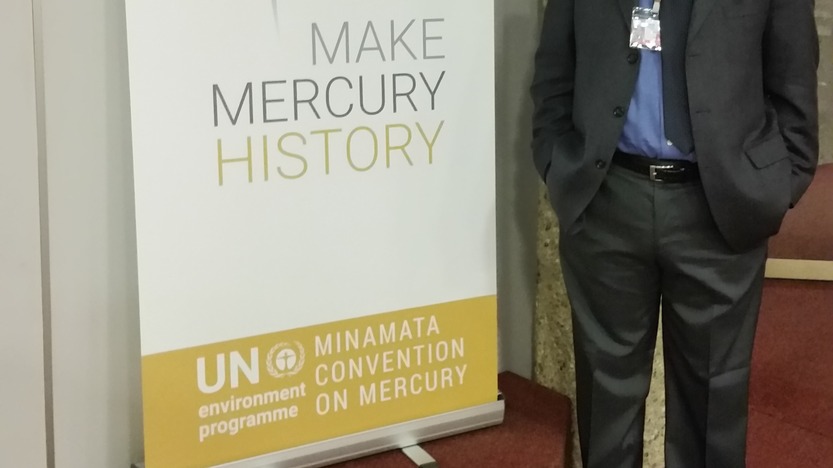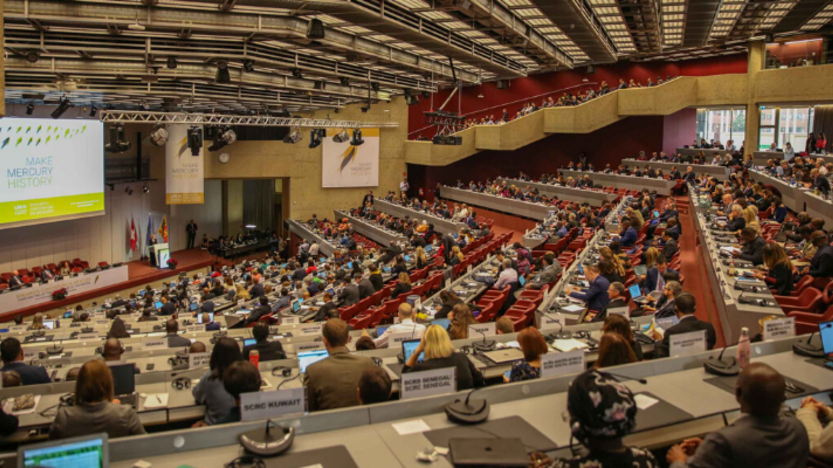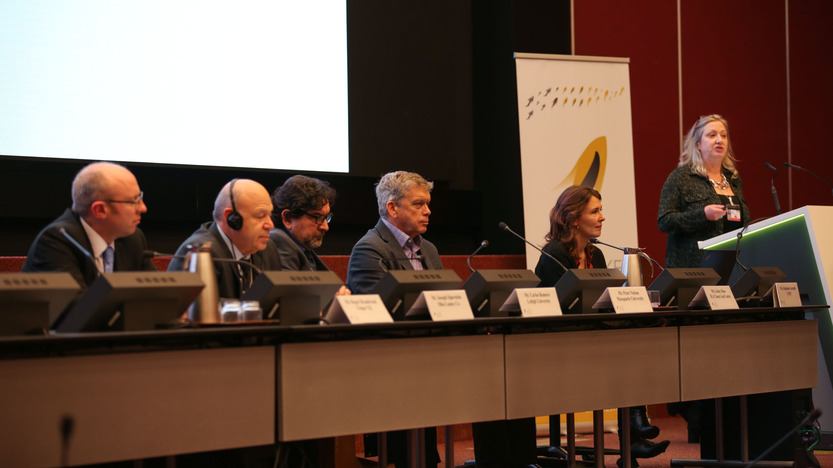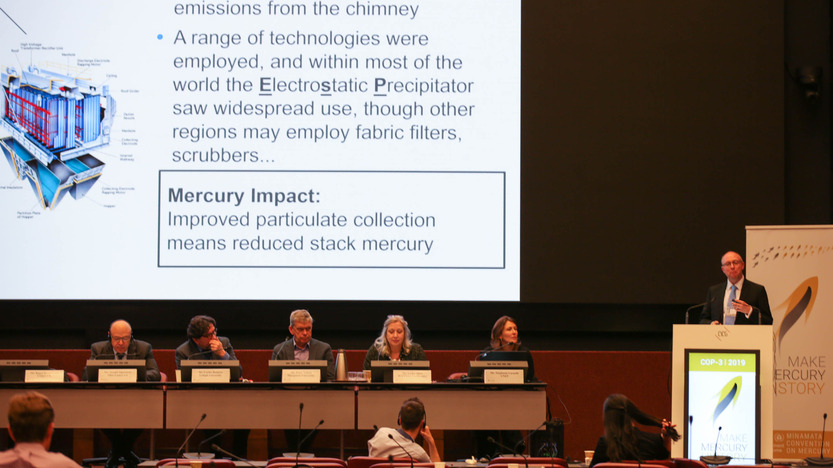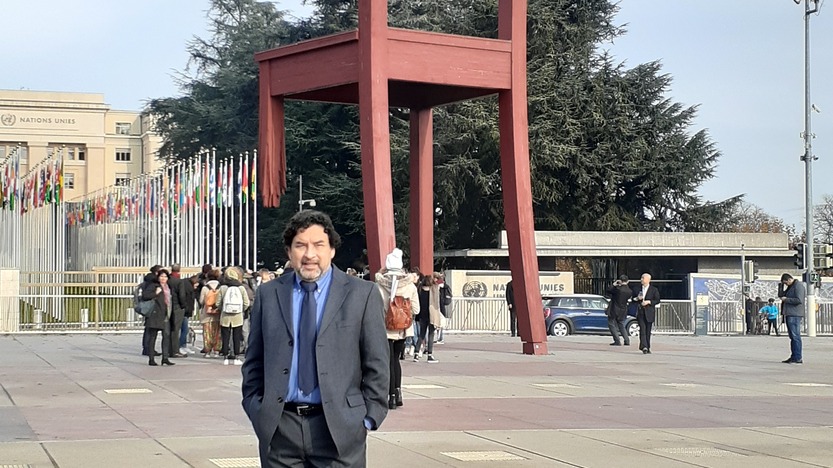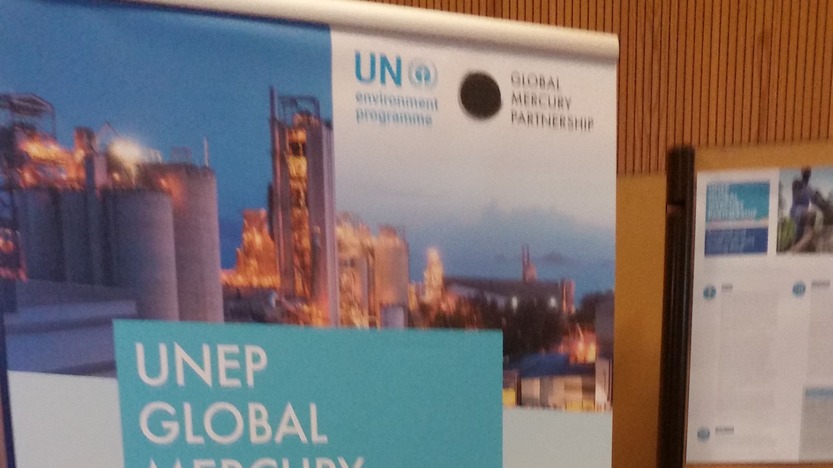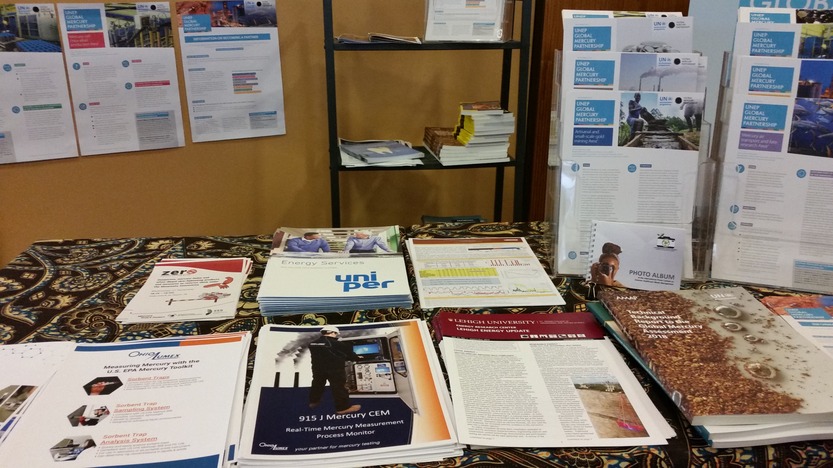Carlos Romero participates in a panel at COP3 (photo credit: mea-minamatasecretariat on Flickr).
The Minamata Convention on Mercury, adopted in 2013, is a global treaty to protect human health and the environment from the adverse effects of mercury by addressing mercury emissions to air and phasing-out certain mercury-containing products. As the mercury equivalent to the Kyoto Protocol (which addresses greenhouse gas emissions), the Minamata Convention has 128 signatories and 190 partners from government, intergovernmental, and non-governmental organizations, as well as academic institutions and private sector companies. Among those partners is Lehigh University’s Energy Research Center (ERC).
Exposure to mercury—a highly toxic heavy metal—can cause serious health problems in people and wildlife. Though mercury is a naturally-occurring chemical element, human activities have increased total atmospheric mercury concentrations by about 450 percent above natural levels. Coal-fired power plants have long been associated with mercury emissions, but activities related to mining, the cement industry, and chlor-alkali (i.e., chlorine manufacturing) industry also emit mercury into the air. Mercury pollution is also introduced into the environment through discarded, mercury-containing products like fluorescent lights, thermometers, and medical devices.
I-CPIE’s Dr. Carlos Romero is Director of the ERC and has been working on this topic for a decade. For example, in 2005, the ERC was at the forefront of a breakthrough in controlling mercury emissions from coal-fired power plants. The effort, led by Romero, resulted in a cost-effective technology capable of cutting flue-gas emissions of mercury by at least 70%. The ERC, which has a fully instrumented mercury lab, also has an extensive history of Mercury and Air Toxics Standards (MATS) emissions compliance research. The MATS regulation was established in 2011 to limit hazardous pollution, like mercury, from coal-burning and oil-burning power plants in the U.S.
At the end of November, Romero traveled to Geneva, Switzerland to present at the third meeting of the Conference of the Parties to the Minamata Convention on Mercury (COP3). He was invited to attend by the United Nations’ Environment Programme (UNEP). Romero participated in a panel with selected experts to discuss the challenge of monitoring and controlling mercury emissions from coal-fired power plants. His presentation, A Quick Guide to Opportunities for Co-Benefits from Plant Optimization and Existing Pollutants Control Measures, provided power industry stakeholders from the countries that are signatories of the Minamata Convention with advice on how to reduce mercury emissions from coal-fired power plants in a cost-effective manner.
Reflecting on his time at COP3, Romero noted that it was, “refreshing to see the high level of interest around the globe in inventorying, understanding the fate of mercury emissions occurrence and transport, and finding information from experts in different fields on how to mitigate the impact of mercury emissions from all potential sources involved in mercury pollution.” As a partner to the Minamata Convention, Lehigh’s ERC is contributing to a global effort to take action and, in the words of Inger Andersen, Executive Director of UNEP, “make mercury history.”

